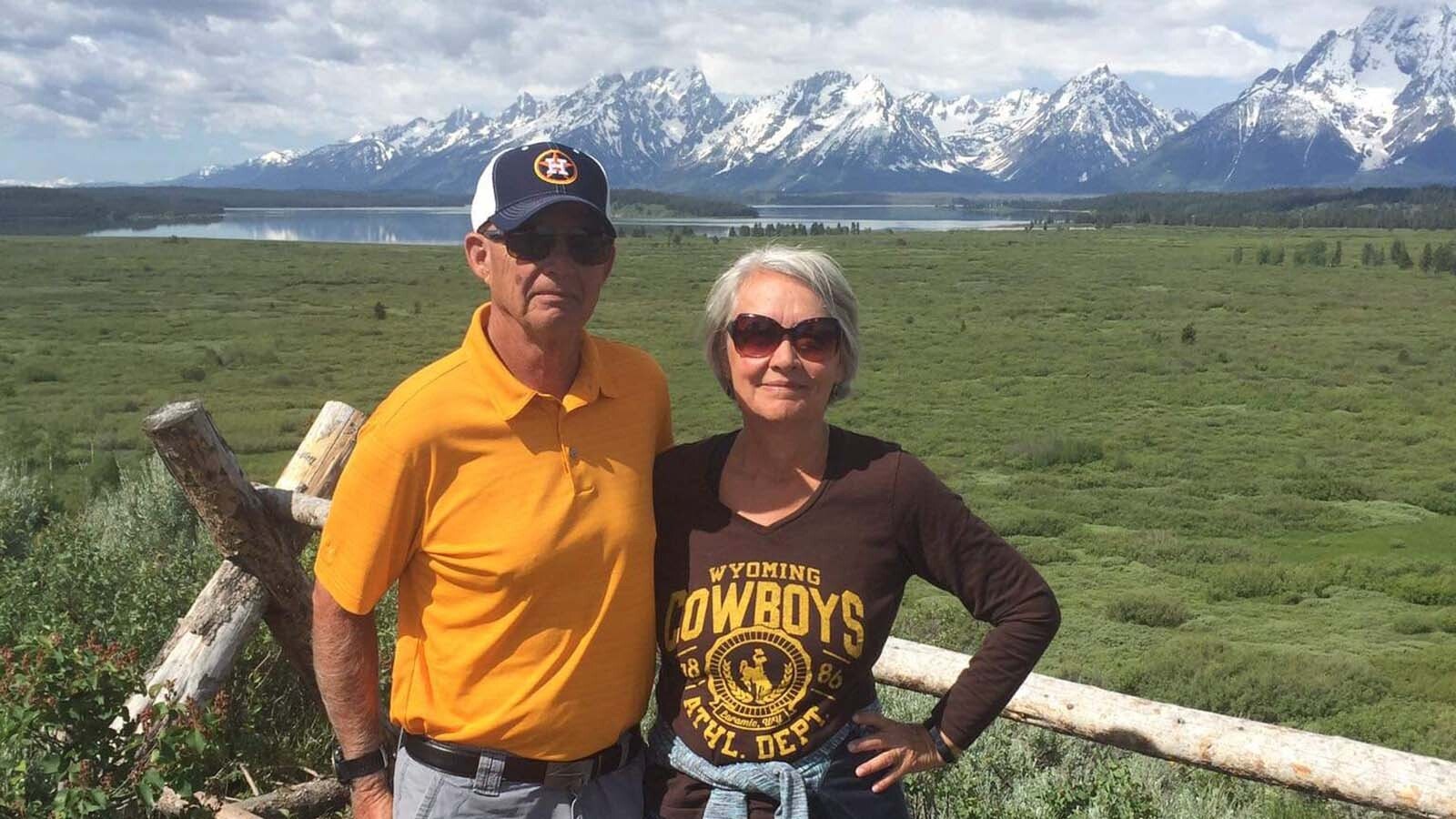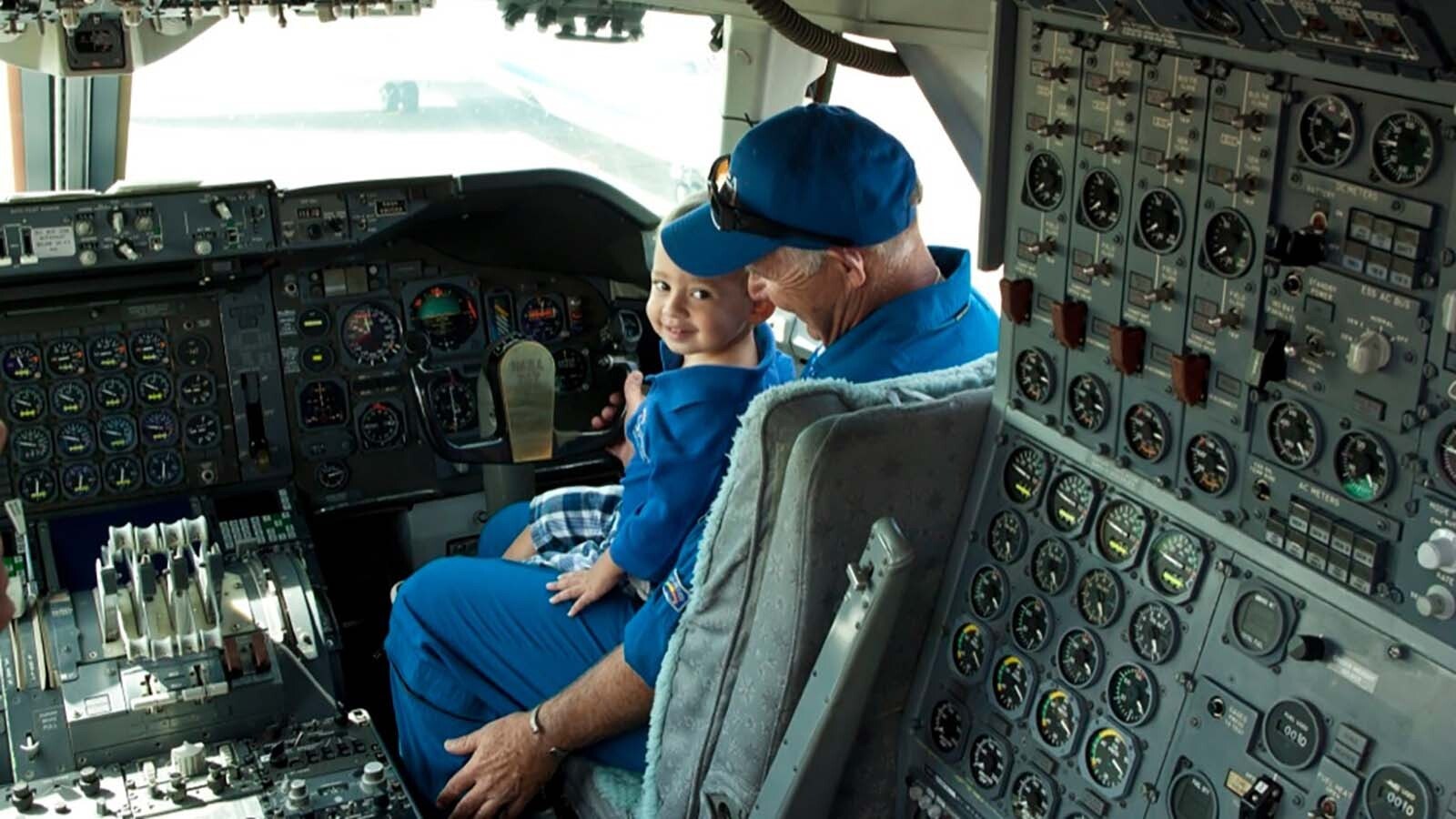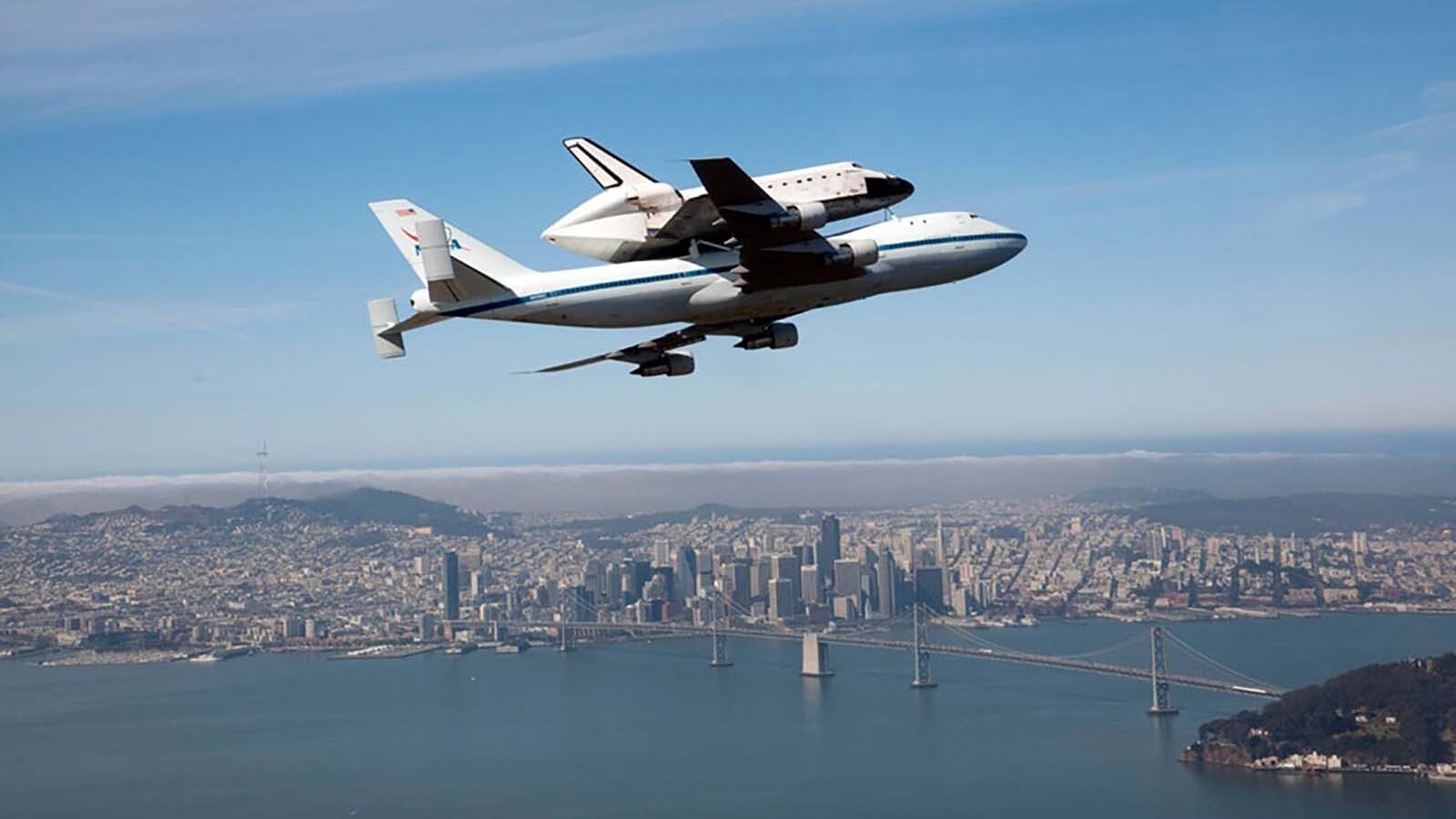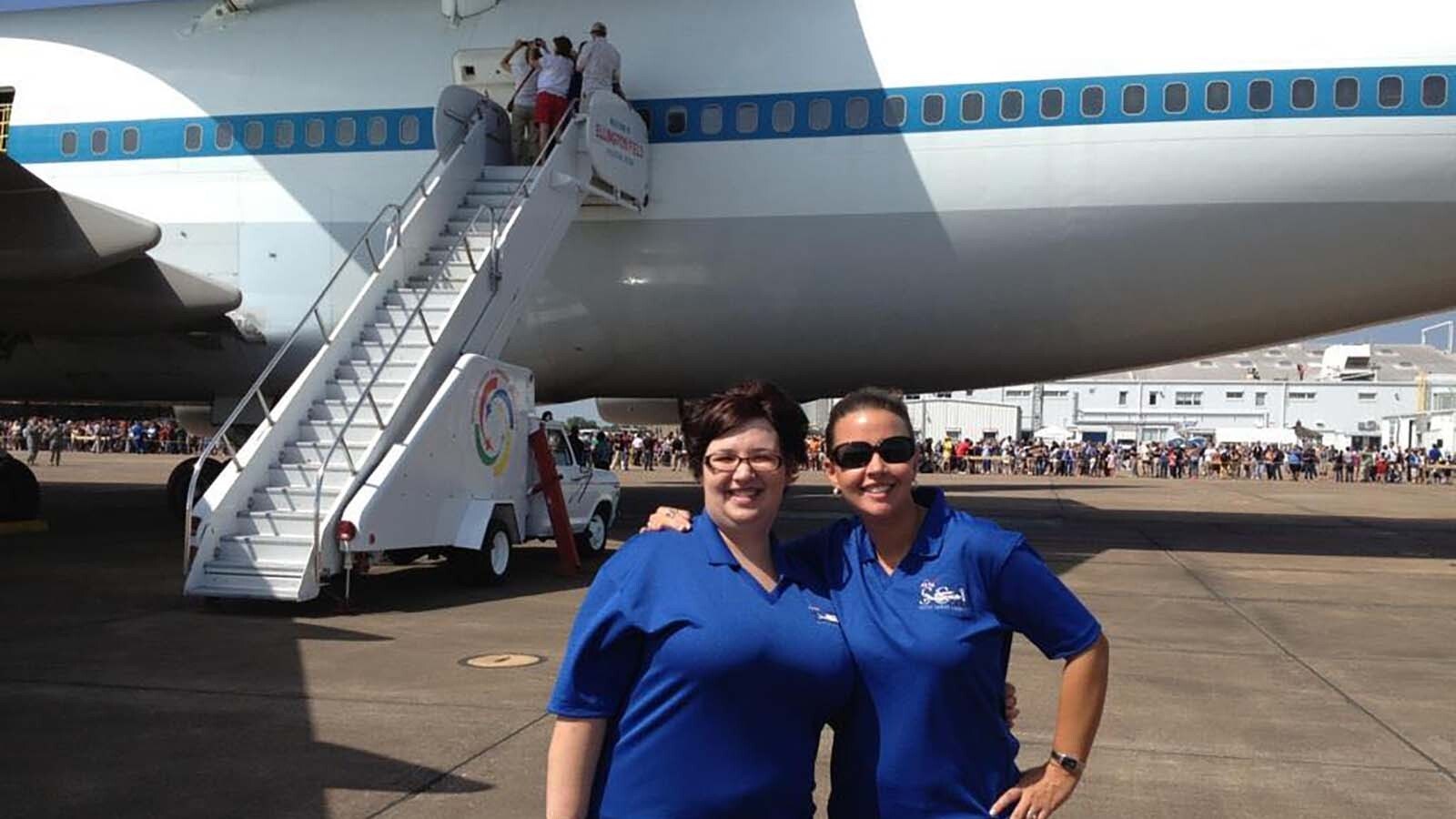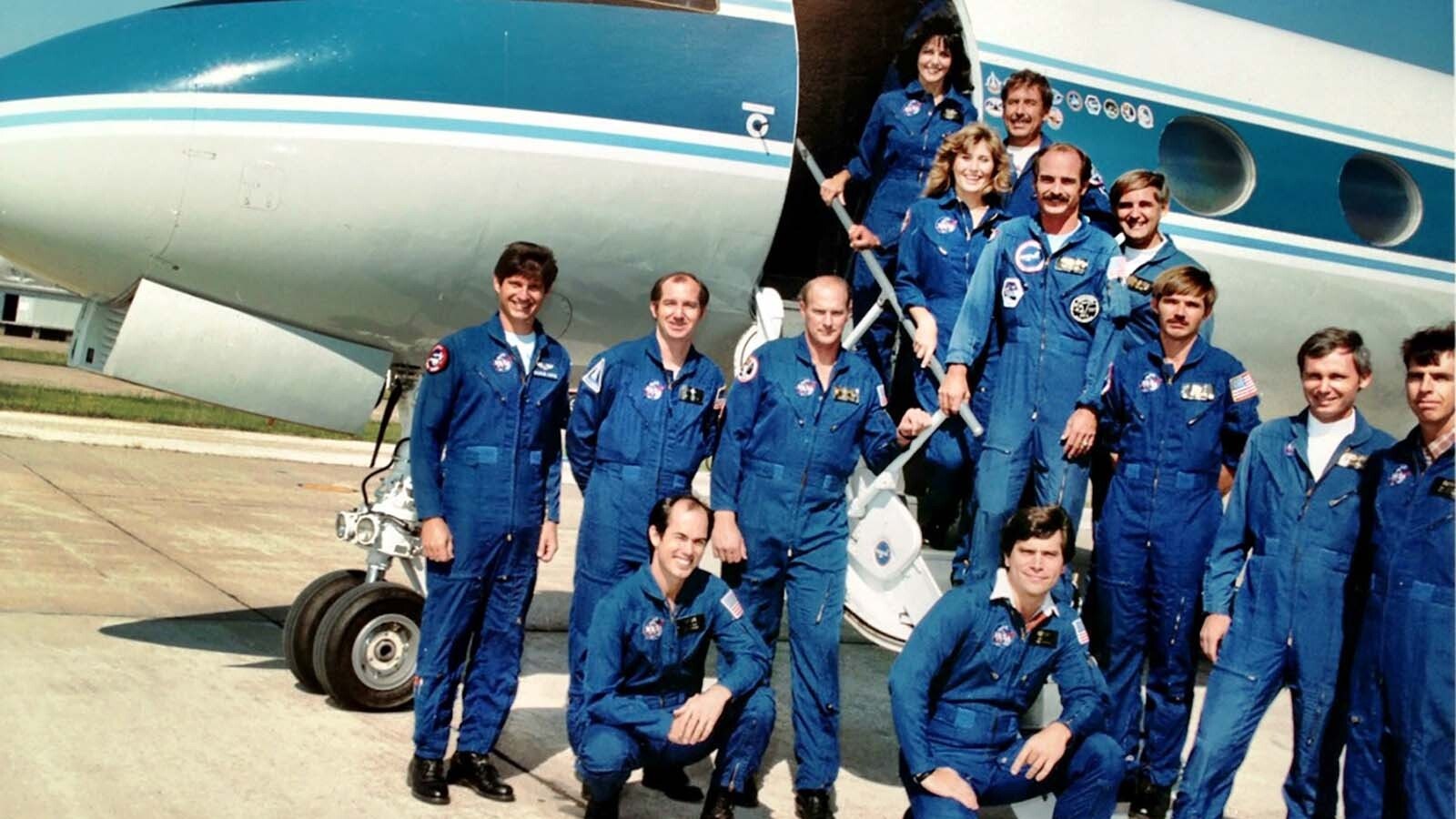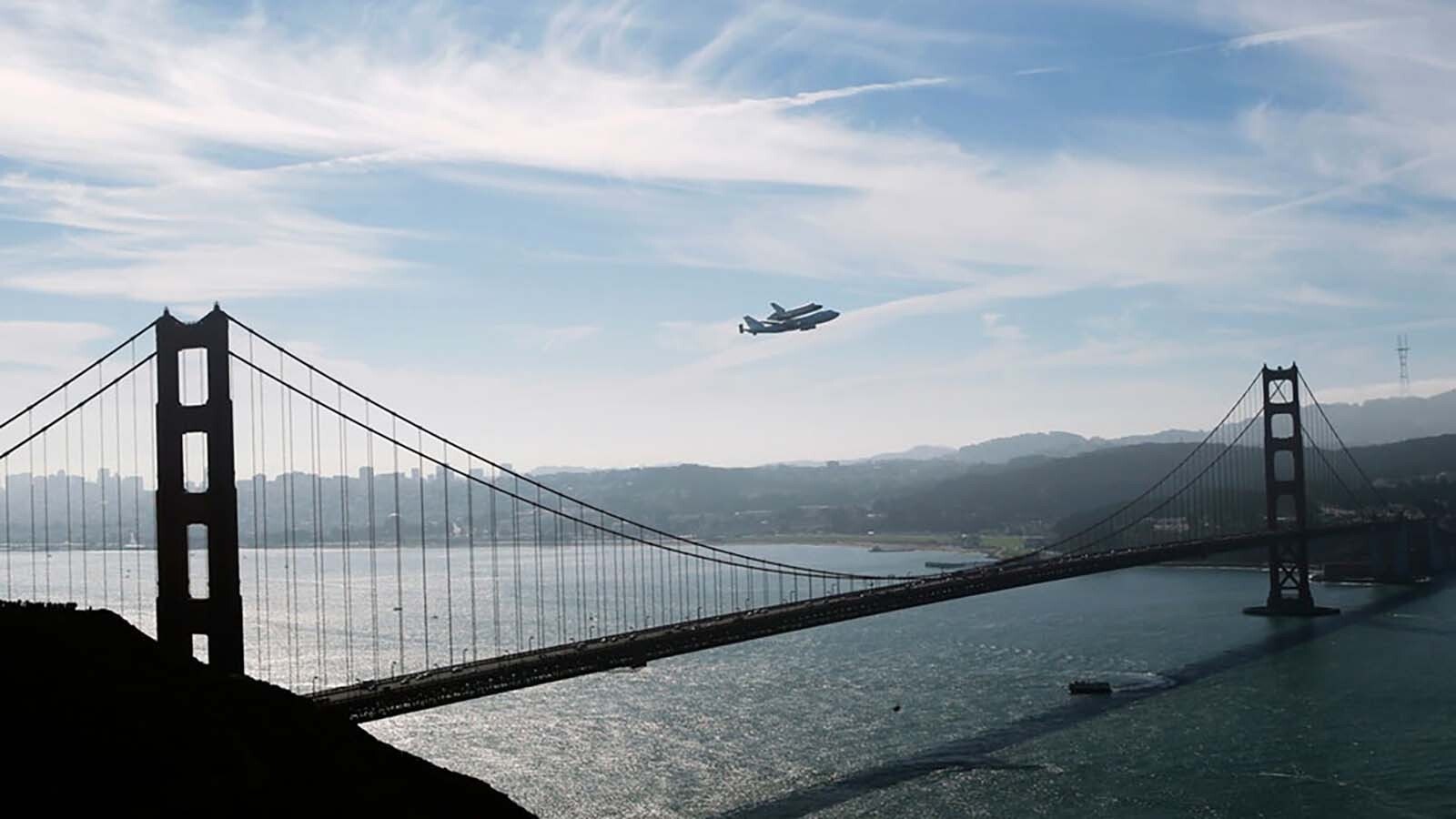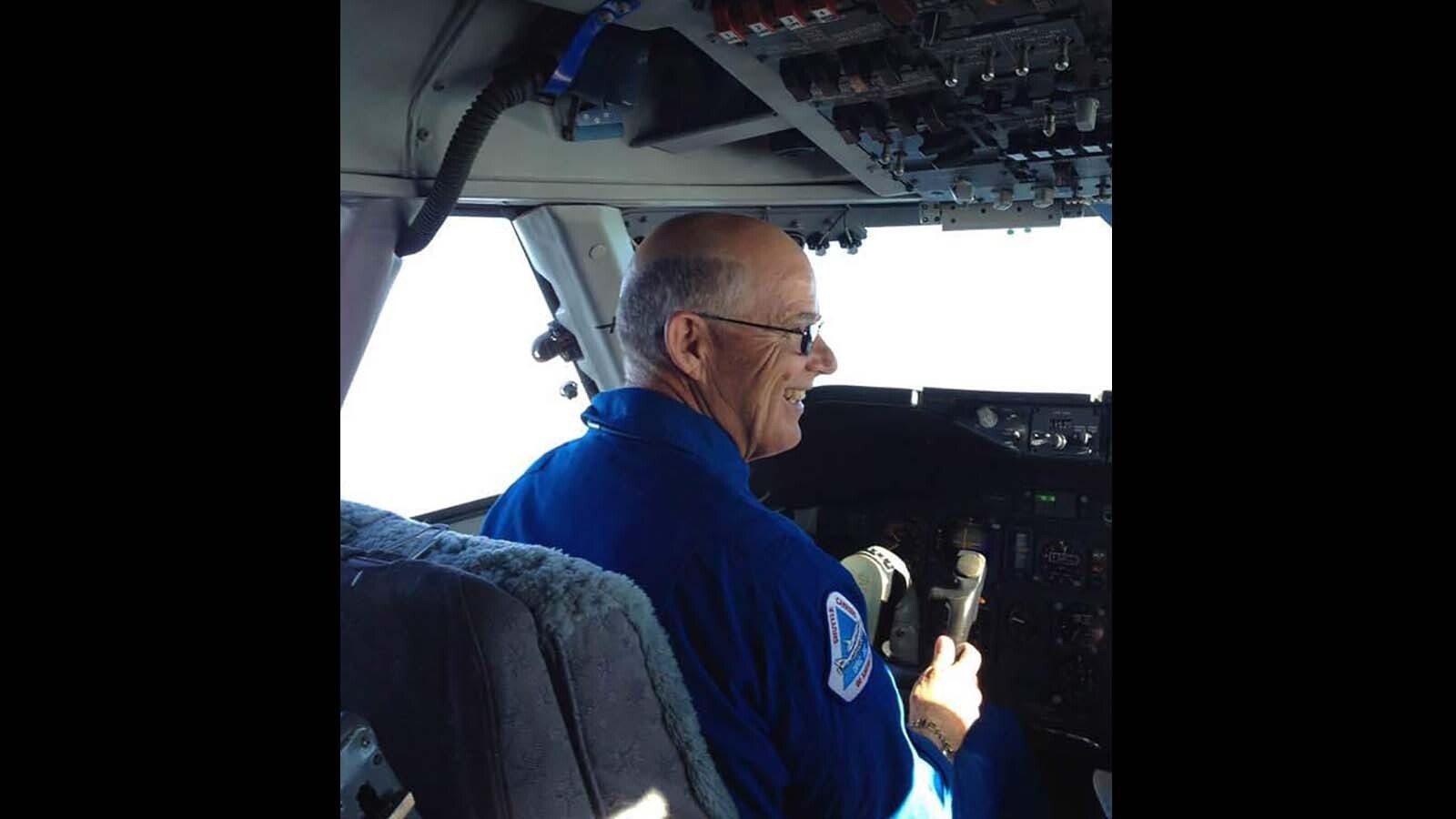The number 13 turned out to be one lucky number for a Lander man — though at the time it didn’t seem like it.
Thirteen was Larry LaRose’s military draft number, and in 1971 it meant that the recent high school graduate was the 13th unlucky soul to be drafted in his lottery for the Vietnam War.
What LaRose didn’t realize was that his feet were being put on a path that would lead him to America’s space shuttle program, where he would get to meet many of the astronauts he’d looked up to as a boy. It was something he never dreamed was possible.
“I can remember the July day in the ’60s when astronauts landed on the moon,” LaRose said. “And we were out playing baseball in the backyard when our parents called us in to watch the landing and it was pretty impressive.”
Later, he got to meet some of the people who were part of that first moon landing. He counts it as just one in a treasure trove of experiences, memories that the LaRose family will often recall as they gather for Thanksgiving.
“The space program was so valuable,” LaRose said. “We had a lot of spin-offs. And what I mean by that is, you know, things that we developed for support in the space program that basically can be used in everyday life.”
Portable computers, memory foam mattresses, scratch-resistant lenses, enriched baby formula — these are just a few of the many conveniences that can trace their heritage back to America’s space program.
Making Lemonade Out Of Lemons
When LaRose got his draft number, he was determined to make the best of an unlucky situation.
“I said, ‘Well, if I have to go into the service, then I might as well go get a career,’ so I went to the Air Force recruiter to find out what my opportunities were,” LaRose said.
The recruiter suggested a mechanics job. That seemed like a great career option, so LaRose took it.
“After my first four years, the Air Force said, ‘We’re short on aviators,’” LaRose recalled. “And I was single, not married at the time. I didn’t have anything other than getting out of the service and going back to college, probably on the GI Bill.”
Flight school was a much more exciting option than that, so LaRose leapt at the chance, even though it meant four more years in the military.
“I already had a little bit of aviation background with my uncle, Bill Waldo,” LaRose said. “I used to fly for the funeral home there in Lander, I think it was Dar Funeral Services. He used to fly caskets around the country from there. Occasionally he needed a copilot, so I’d fly with him.”
LaRose was 8 or 9 years old at the time. His main job was to talk to his uncle and help him stay alert.
Just Young Enough
With four more years in the military, LaRose had just enough flight experience and he was just young enough to be perfect for a brand-new opportunity.
NASA’s space shuttle program needed young aviators with experience.
“One of the reasons the program was looking for young aviators is because during the Apollo and Gemini days, you had to have a lot of experience to be part of the program,” LaRose said. “Well, the problem is, if you have a lot of experience, you don’t have a lot of longevity. So, NASA basically changed a little bit of the way they hire folks. They basically said, ‘OK, we will accept a little less flying time, but give us a little more longevity.’”
LaRose had hit the sweet spot, entirely by accident, and all thanks to that now-lucky No. 13.
The job with the space shuttle program was exciting, but came with a lot of surprises.
“I did cargo airplane, transport airplanes, to fly cargo all around the world,” he said. “I didn’t have a thought about an airplane that would simulate the shuttle and be falling out of the sky at 14,000 to 15,000 feet per minute. I had no concept of that type of flying.”
He also wasn’t familiar with the idea of a zero-gravity airplane flight, which was one of the first he qualified to fly when he went to work for NASA.
As his career progressed, LaRose became part of a team that was training NASA’s space shuttle pilots, and eventually he was one of the flight engineers who flew the jet that taxied the shuttle around, getting it from one location to another.
The Shuttle Is A Terrible Airplane
LaRose never flew the shuttle itself, but he trained a lot of astronauts who did.
Flying the shuttle is completely different than flying a regular airplane, LaRose said, and it required an intense training approach.
“We had an airplane, a Gulfstream II, which we modified to make it fly like the space shuttle,” LaRose said. “And when I say fly like the shuttle, the shuttle didn’t fly very good because it flies about as well as a rocket.”
That means when the shuttle re-enters the atmosphere, it’s a bit like a hot, molten rock falling from the sky at a “screaming” high speed, with just one opportunity to nail the landing, he said.
“So, what we did was take lift away from the wing,” LaRose said. “We put the engines in reverse thrust, and we basically got it down to about a five to one lift over drag, which the shuttle was about two to one, and we figured that was pretty close to what we needed to simulate the shuttle approach.”
The astronauts in training to fly the shuttle would take the modified jet up to about 35,000 feet in altitude, put the nose at 20 degrees pitch attitude and fall from the sky from 14,000 to 15,000 feet per minute.
“We were just screaming at the ground,” LaRose said. “And in the last minute at 2,000 feet, we’d pull the nose up and glide in for a landing 2,500 feet into the runway.”
During training, pilots could abort at any time that things weren’t going well. But shuttle pilots only get one shot at the landing the real deal when the shuttle is returning home, LaRose added.
“If we don’t get to the runway, there’s no go-around capabilities,” LaRose said. “It can’t go around and make another approach. You only get one shot, so that’s why we trained over and over again.”
Air Taxi In The Sky
Taking the shuttle on an air taxi or piggyback ride from point a to point b was not a typical flight either.
“We flew at a little lower, a little lower in airspeed and a lower in altitude just because of the shuttle on top of it and the drag,” LaRose said. “We had a lot of mission rules, too, what we could fly in and what we couldn’t fly in. There was a lot more scrutiny than just a normal 747 operation.”
The shuttle couldn’t go up over 15,000 feet because of its fuel.
“We couldn’t heat up the orbiter to keep it from freezing the fuel cells,” LaRose said. “And then we couldn’t fly through turbulence, and then we were restricted to 250 knots airspeed. So low and slow. It took us two and a half days to get across the country.”
Landings had to be on a runway with more than 10,000 feet.
“We would move the shuttle fairly frequently,” LaRose said.
In the beginning, all the maintenance was in California where the shuttles were manufactured. Launches generally took place in Florida at Kennedy Space Center.
But weather wasn’t always amenable to the shuttle’s landing schedule, so alternate landing sites were required.
“You couldn’t fly the shuttle through any kind of clouds or moisture, because you would destroy the tiles on the shuttle,” LaRose said. “So, if there was any weather in Florida at the time, they would use Edwards Air Force Base as an alternative landing site.”
There were also contingency locations around the world for landing the shuttle. White Sands Missile Range in California and New Mexico, as well as landing sites in Spain, Morocco, and other locations.
And “If something were to happen during the launch phase, and the shuttle had to abort, then they could land overseas,” LaRose said. “And then we would have to fly to those areas to bring it back.”
The contingency locations were never needed except one time, early in the program. White Sands Missile Range was the landing site that time.
Flying the shuttle to a location was always a pretty big deal, LaRose added.
“You don’t sneak into town,” he said. “It’s a pretty big vehicle, and so there’s a lot of people on the ground. When you land, there’s a lot of folks who want to go aboard.”
Right Next To Michelle Obama
LaRose’s most thrilling memory was watching the shuttle go up for the first time and actually feeling the vibration of the engines as it roared off the launch pad and into history.
But his wife, Helen, also has thrilling memories of their time in the shuttle program.
“I’ve actually gotten to do some things that even he hasn’t gotten to do,” Helen told Cowboy State Daily. “There was one time I went with him to Florida for a launch and he was working, but I was free with a bunch of other people, and so I got to go on board the shuttle as it was being prepared.”
She’s also met presidents and other astronauts, as well as other dignitaries, while her husband was busy behind the scenes, working.
One of her most memorable moments came in 2013, when the shuttle was being retired. She was among those who got to go on board.
“You know I had to wear, I had to take some articles of clothing off like belts and shoes, and I had to take my earrings off,” she recalled. “I couldn’t have anything loose. Everything that I had on had to be covered by this white suit. I had a hair net over my hair and the whole nine yards just to get inside.”
Inside, she was handed a pen to sign the shuttle wall but there was no space left.
“Somebody that I knew went over and there was a clock on the wall, and they took the clock off and they said sign under here,” Helen said.
“Here” turned out to be right next to Michele Obama’s name.
A Pioneer In The Modern World
Growing up in Lander, LaRose remembers seeing astronauts when he was a child.
“NASA hosted a lot of NASA astronauts for the one-shot antelope hunt back in the 60s,” LaRose said. “So, as a kid, I got to see some astronauts come to town and be part of that.”
He never imagined that one day he would get to rub elbows with any of those people, though, and that’s something he still thinks about to this day.
“It’s all on how things in your life get changed by certain circumstances,” he said. “I was just going to go work at USS and I didn’t really have a desire to go to school. I didn’t have a career path. I was just going to stay in Lander and be part of the Lander community.”
Later on, though, as a part of the shuttle training team, LaRose was among vocal advocates that NASA should return to Lander to use the National Outdoor Leadership School, or NOLS, to train NASA crew members.
“You know, these folks are highly educated and highly motivated,” LaRose said. “But a lot of times they’ve worked by themselves, and we needed them to work as crews.”
Putting the soon-to-be astronauts in a survival situation seemed like the best way to get them all to rely on each other and work together.
“So that’s why we decided to use NOLS in Lander, to say, ‘You know, go up in the mountains and learn to work as a team.’”
Looking back, being from Lander, LaRose sees another connection with the astronaut program that he wasn’t conscious of at the time.
“I can relate to the Oregon Trail and being a pioneer going across to say, ‘Hey, you know I don’t know what’s out there in front of me,” he said. “It’s the same sort of thing with space. We just don’t know, until we go out there and look at it.”
Renée Jean can be reached at renee@cowboystatedaily.com.


